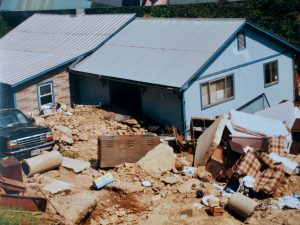Posted on December 10, 2021 by Robert Uram

On November 15, 2021, President Biden signed H.R. 3685, the Infrastructure Investment and Jobs Act. Title VII of H.R. 3685 appropriates more than $11 billion and authorizes and requires the Department of the Interior to provide money to eligible States and Indian Tribes for the purpose addressing hazards and reclaiming land and water blighted by abandoned coal mines. The Surface Mining Control and Reclamation Act remedies safety and public health hazards and reclaims and eliminates the blight to land and water from abandoned coal mines, and the eleven billion dollars appropriated in Title VII is a bonanza for that program.
The $11 billion is nearly twice as much as has been spent for abandoned mine reclamation in the past 44 years. At a cost of more than $6 billion, tens of thousands of hazards have been eliminated, saving lives. Nearly a million acres have been reclaimed. Hundreds of miles of streams polluted by acid mine drainage have been restored to health allowing fisheries and water-related recreational uses that build economic health of rural areas. Increasingly, reclaimed abandoned mine lands are being used for recreation, parks, industrial and commercial developments and museums. The benefits of this work cannot be overstated. Estimates of the work yet to be completed range from $12 to $20 billion. The $11 billion of Title VII money will be put to good use. It will be allocated to States and Tribes based on pre-1977 coal production instead of the past allocations based on current coal production. The Appalachian Law Center estimates that the top ten historic coal producing States could collectively receive approximately $8.1 billion. Pennsylvania could receive $3.8 billion, West Virginia $2.1 billion, Illinois $1.175 billion, Kentucky $1.15 billion, Ohio $720 million, Indiana $382 million, Virginia $353 million, Alabama $317 million, Colorado $154 million and Wyoming $150 million. All of the State or Indian Tribes receiving funding would receive at least $20 million.
Title VII also continues, until 2034, though at reduced rates, the fee coal producers pay per ton of coal mined. Fees on coal production have been the primary source for funding abandoned mine reclamation programs since Congress passed the Surface Mining Control and Reclamation Act in 1977. These new, reduced fees will likely raise less than a billion dollars, a drop in the bucket compared to the need. However, it is certainly appropriate to continue to have the coal mining industry continue to contribute to the Abandoned Mine Land Fund.
There are significant differences between Title VII and the existing fee-based system.
Funding. Funding is more certain under Title VII than under existing grants. Title VII grants will made be in equal installments for 15 years while fee-based grants vary from year to year based on coal production. Title VII grants will remain under the grantee’s control for approximately 20 years until the Secretary completes an evaluation of grant payments, at which time, unused funds will be returned to the Abandoned Mine Reclamation Fund. By contrast, fee-based grants that are not expended within three years are redistributed to other grantees. In addition, unallocated money can be used for a variety of purposes.
Authorized Uses. Title VII grants are subject to fewer restrictions than fee-based grants. Title VII grants can be used for Priority 1 (protection of public health, and safety and property from extreme hazards), Priority 2 (protection of public health and safety from adverse effects of coal mining), and Priority 3 (restoration of land and water and the environment) projects. In contrast, fee-based grants must be done in “strict compliance” with the priorities in Section 403(a) and may be used for Priority 3 projects only in conjunction with Priority 1 and 2 projects. As a result of these differences, Title VII grantees have more flexibility to fund projects that have the most public benefit, including treatment of acid mine drainage.
Concluding Thoughts
The Office of Surface Mining Control Reclamation and Enforcement and its State and Indian Tribal counterparts have a shared commitment to working cooperatively to reclaim pre-SMCRA mined lands. Throughout the forty plus years, States and Indian Tribes never had sufficient money to accomplish their goals. The bounty from Title VII will allow a great deal of progress, more than almost anyone could have reasonably anticipated. It will bring good jobs, help the rural economies, improve the environment and make the coal fields a safer and better place for people to live and work. Kudos to President Biden and those members of Congress who voted to pass the Infrastructure Act and who had the vision to accelerate abandoned mine land and water reclamation.
